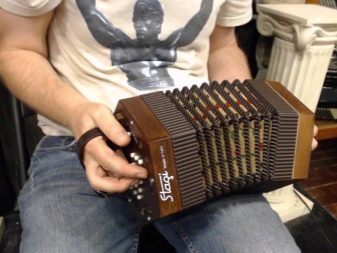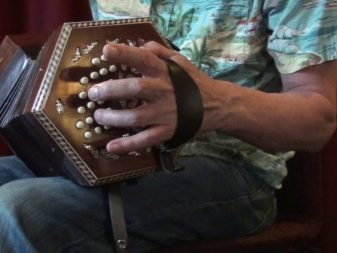What is concertina and how does it sound?
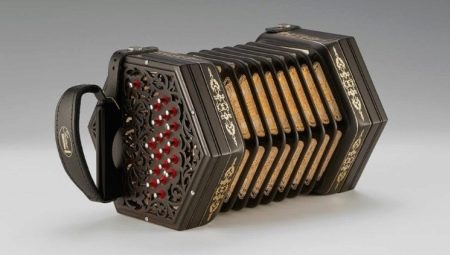
Concertina is a rather interesting, but unfamiliar musical instrument to many. We will tell you about what it is, about its varieties, and the peculiarities of playing on it below.
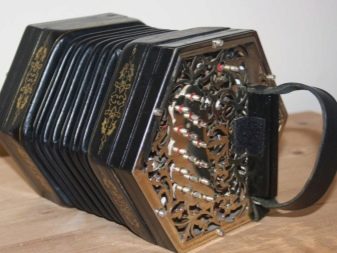
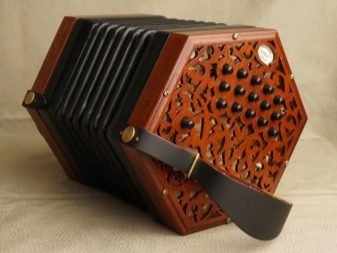
What it is?
Concertina is a musical instrument belonging to the pneumatic reed group. This is a relatively new instrument that was created and patented in the nineteenth century in England by such a famous inventor as Charles Winston. At that time, it was often used in church chants, as well as in small orchestras.
In the seventies of the nineteenth century, this instrument appeared in our country, in a city like St. Petersburg. It happened on the initiative of Grigory Alekseevich Marenich, a Russian music teacher.
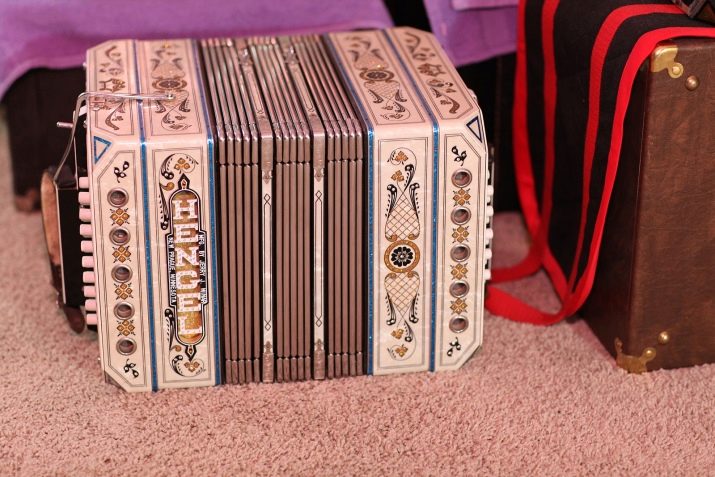
The very first concert using concertina dates back to 1889. It was organized at the request of such a Russian concertist as Isaak Osipovich Pirozhnikov. It was held at the Vilna Jewish Teachers' Educational Institution. The same concertist created several leaflets promoting this musical instrument.
At the very beginning of the twentieth century, already in 1900, the concertina, which was presented at the Paris exhibition, won the first prize. It was created by such a Vyatka master as Ivan Fedorovich Suntsov. He was engaged in the release of musical instruments in the likeness of those made in England.
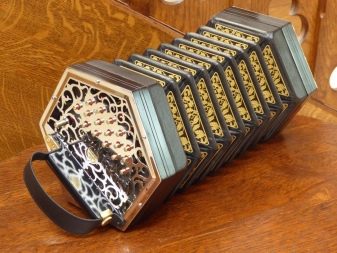
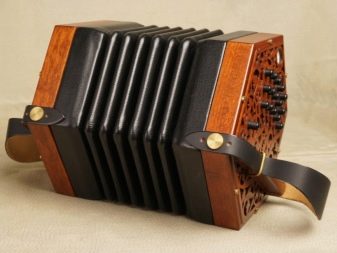
In addition, it should also be said that the concertina also has a so-called relative - the bandoneon. Masters from Germany were engaged in its creation. It, in contrast to the concertina, has a less high sounding. It surpasses this musical instrument in size.
Now let's analyze and consider in more detail the concertina itself, its structure and appearance.
This musical instrument itself is quite interesting and has a lot of similarities with the Russian harmonica that we are all used to. It does not have keys; instead, the instrument has buttons that are located on two decks. This musical instrument looks like a mini-version of the button accordion. It itself has six sides, and its tongues are located along the edges of the case. It also has straps that make playing the instrument more comfortable.
Concertina cannot be called too cumbersome musical instrument. She is quite small, her diagonal size varies from fifteen centimeters to eighteen.
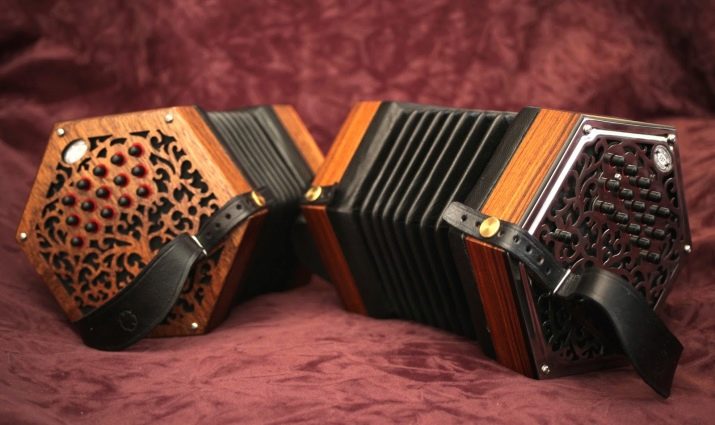
Sound production at the concertina occurs due to the vibrations of the air column. It happens as follows: air is in the inner part of the concentrina body, after which oscillating movements begin, which is why sound is formed.
The following performers on this musical instrument are known: Giulio Regondi, Pavel Rudakov, Richard Blagrove, Nikolai Bandurin, Gennady Vetrov, Valentin Osipov and others.
By the twentieth century, concertina was almost not used, but over time it began to revive as the national musical instrument of the peoples of Scotland and Ireland.
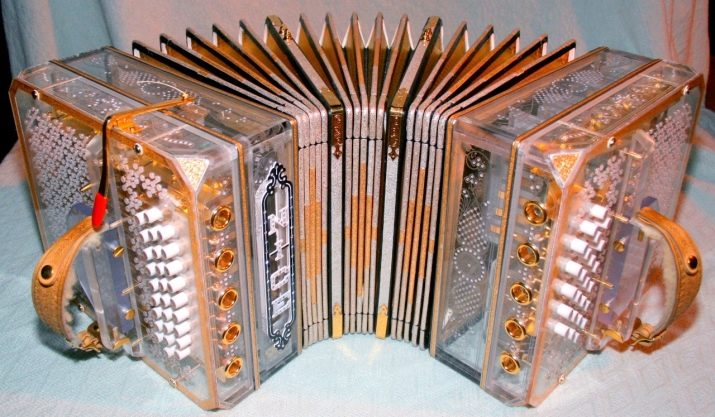
Species overview
Concerts can be of different sizes or timbres: violin, alto, cello, double bass. However, the tool does not have that many types of systems. There are three of them in total: English, English, and also a duet.
Let's take a closer look at each of them.
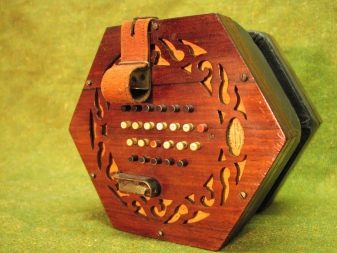
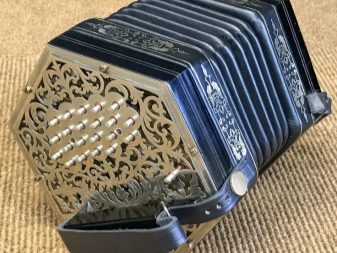
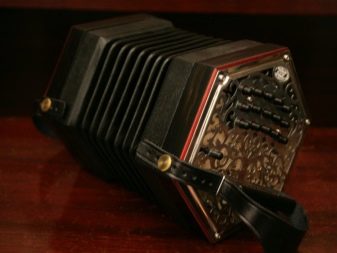
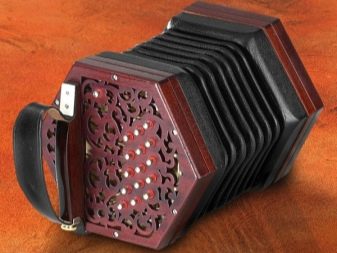
Anglo
This instrument is a diatonic one, it has specially separated melodic and bass buttons, which are located on different sides of the instrument. Anglo-concertina is fixed on the wrists of the player.
In turn, this system is divided into two more subspecies: Dutch and Anglo. The first variety has twenty buttons and is not very large, while the second has thirty buttons and is slightly larger than the first.
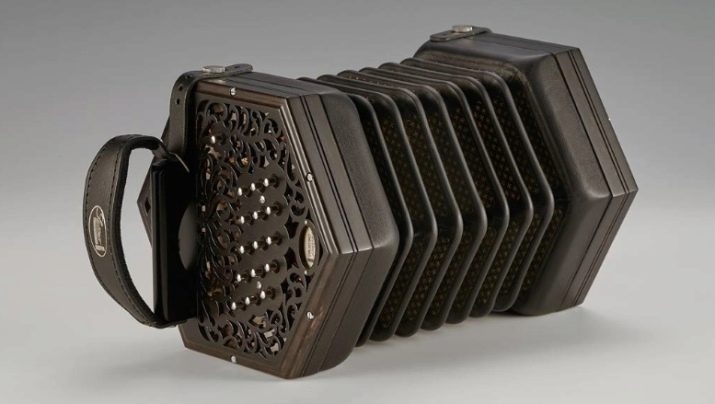
English
This instrument is classified as chromatic. The bass and melodic buttons, which are also located on different sides of the instrument, are mixed. Their number varies depending on who the concertina producer is.
This type is fixed on the thumbs of both hands of the player, and there are special indentations for the little fingers.
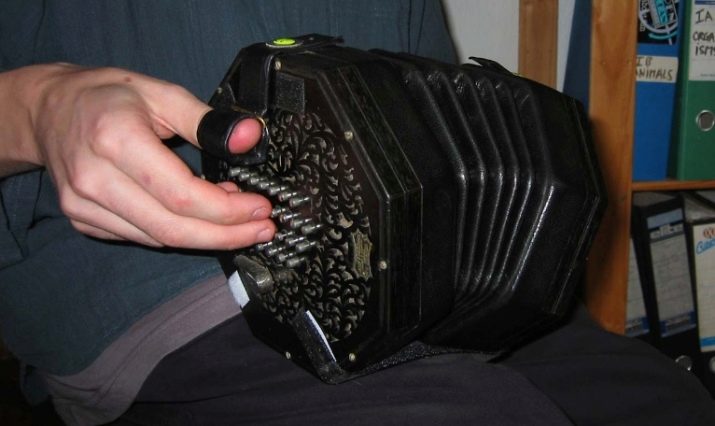
Duet
Concertina with such a system was created in the sixty-third year of the twentieth century. It is characterized by the peculiarities of both the English and English concertina systems. So, this variety has special fasteners that are intended for the performer's wrists, and the separation of the buttons, which is borrowed from the Anglo concertina. The English has adopted such a feature as the chromatic scale.
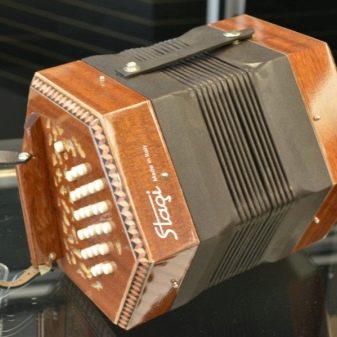
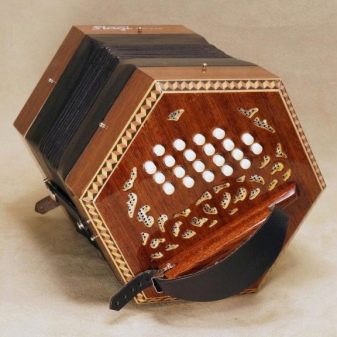
Sound features
The sound of the concertina in many ways resembles the harmonica, traditional for many. This musical instrument does not have great strength and fullness of sound, but the latter is distinguished by sufficient melodiousness, subtlety and tenderness, which attracts most of the performers. This pleasant sound comes from vibrations.
The sound of the concertina today can often be heard at various festivals and festivals of the Scots and Irish.
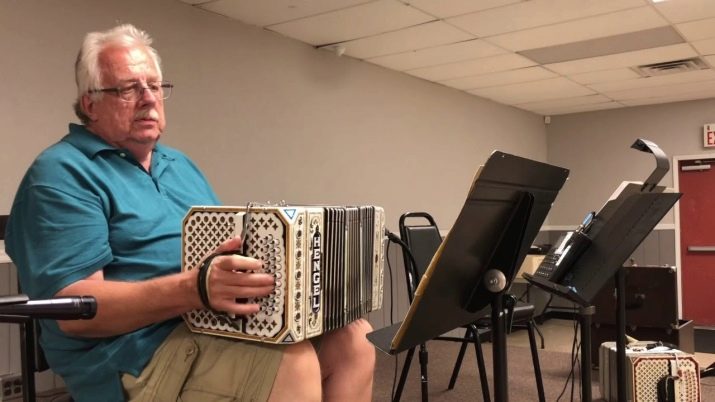
How to play?
Playing this musical is a snap. The process itself is somewhat similar to playing the accordion.
To produce sound on a concertina, bellows are used, as well as keys, which are located on both sides of the musical instrument. During the game, only three fingers of each of the player's hands are used, while holding the instrument usually with the thumbs and little fingers.
